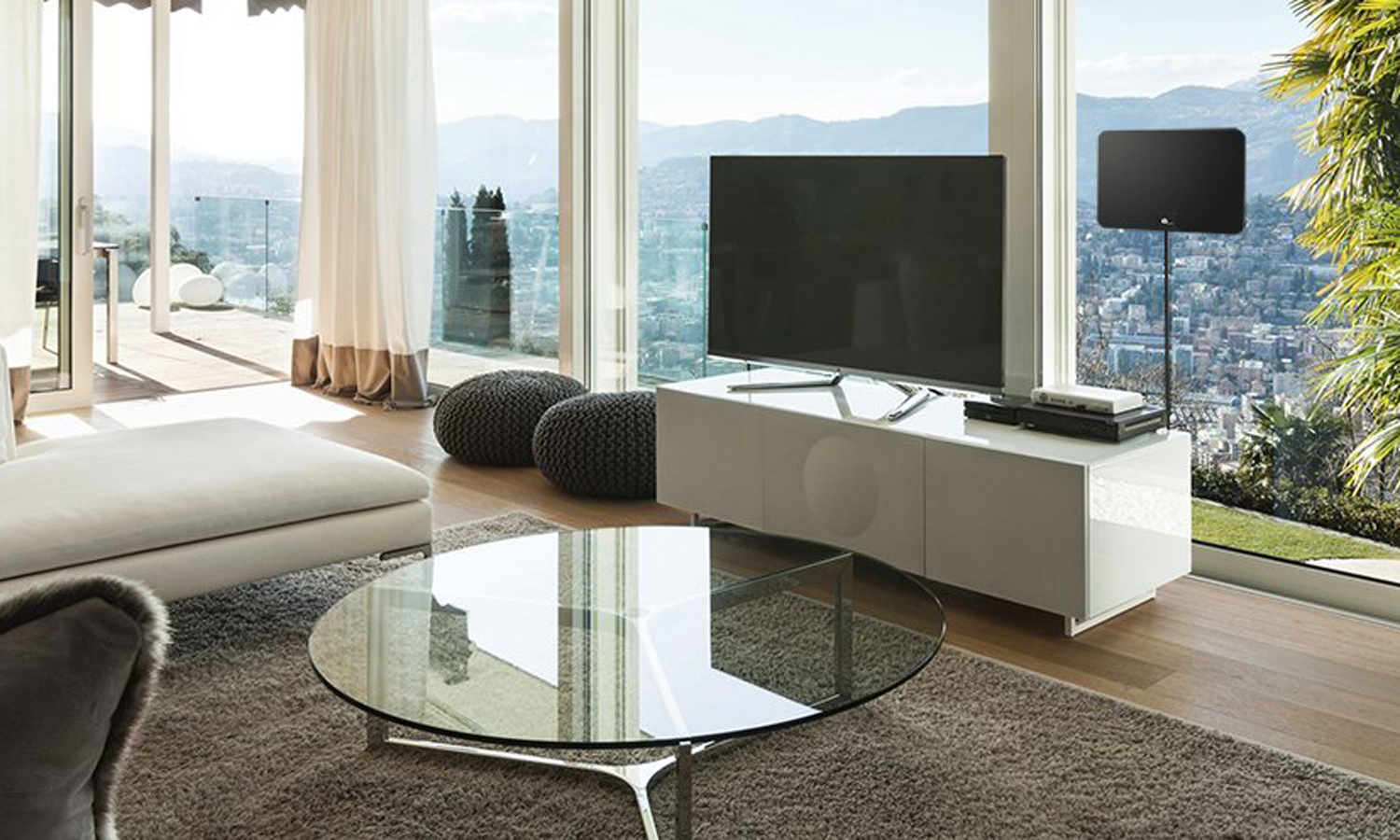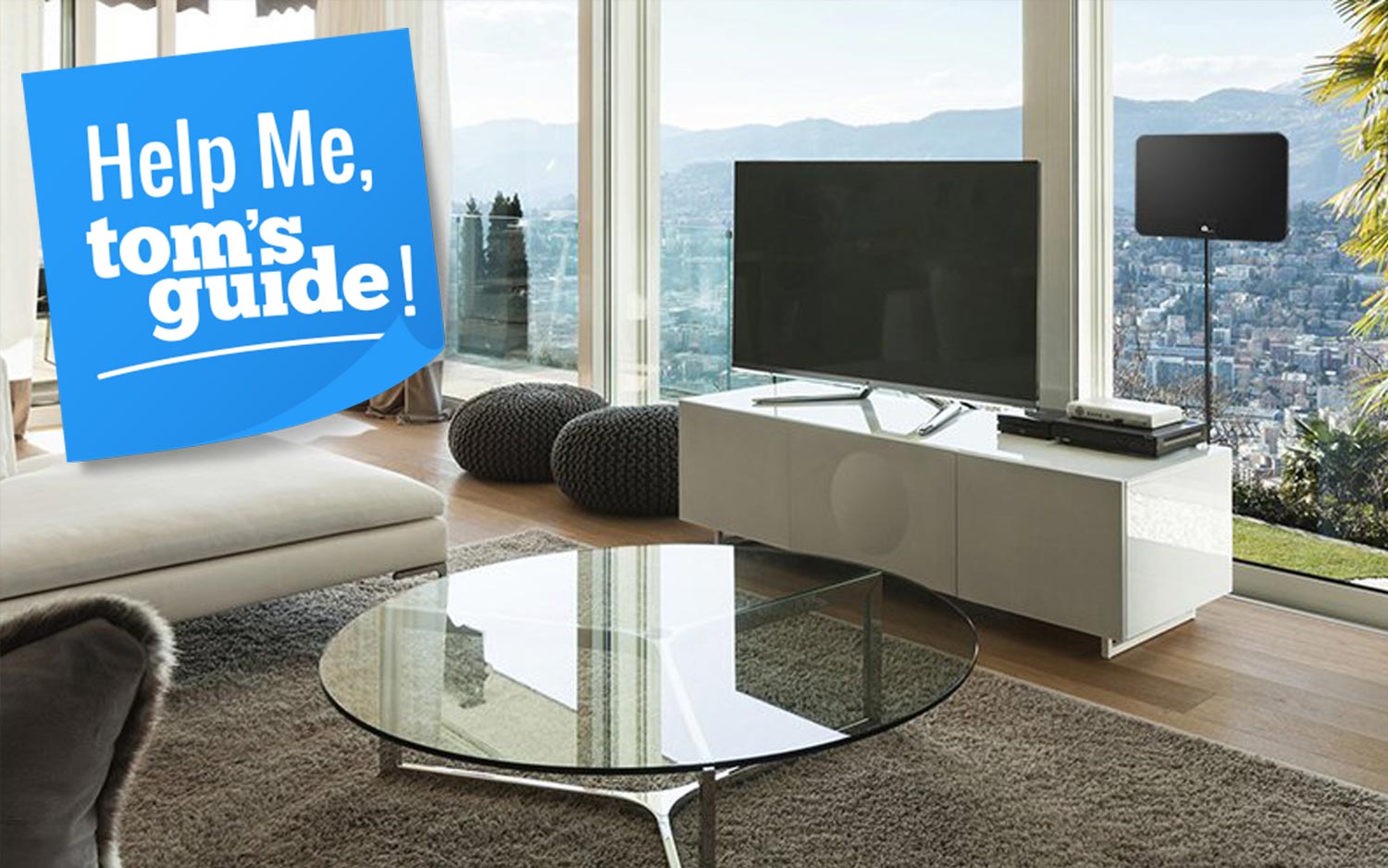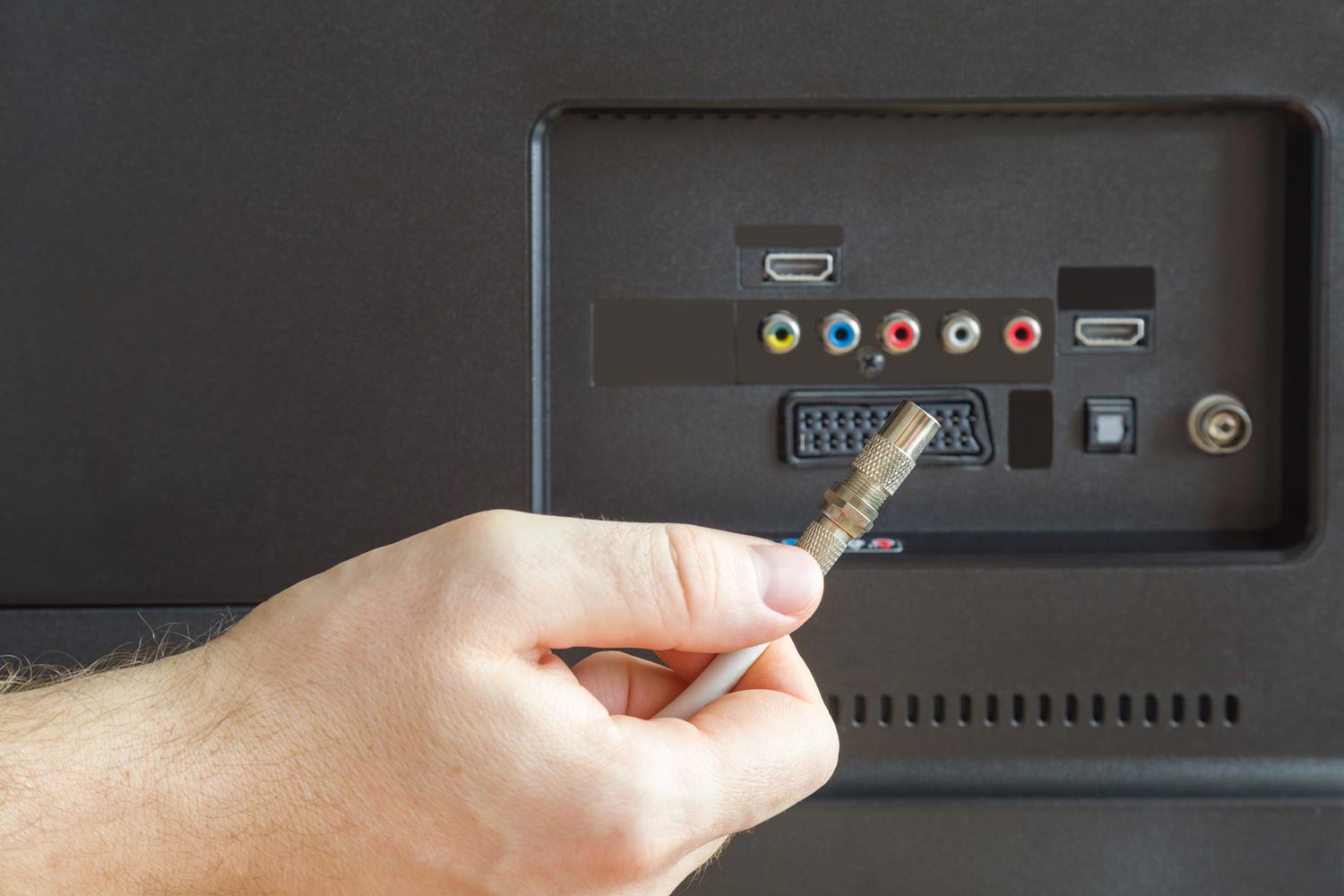Help Me, Tom's Guide: Is My Antenna Cable Causing Signal Loss?
If you're dealing with a weak or degraded TV antenna signal, here's how to check your cable.

When an over-the-air TV signal works properly, it's like magic, giving you an HD picture and a wealth of live content for free. But when you're dealing with a weak or degraded antenna signal, you start wondering what you can do about it, and eyeing every connection and part with suspicion.

Tom's Guide forum user Wabbit41 is in that very position, trying to determine why his TV signal isn't coming in clearly. He asks: "Does the length of the cable from the antenna to the TV affect the signal? My TV is on an inside wall and the window is about 15 feet away and the cable would have to go around a door opening."
Cable Length and Signal Loss
Let's get the basic answer out of the way up front: Yes, cable length can and will have a negative impact on TV signal, because it's an imperfect transmission medium, and signal degradation is a known issue. While we could get into the technical details of radio-signal strength, transmission frequencies and cable impedance, there's not much need in this case.
MORE: Best TV Antenna - Indoor HDTV Antenna Reviews
When it comes to signal loss over longer cable lengths, the basic rule of thumb is that a 50-foot cable can experience noticeable signal loss, and a 100-foot cable can drop as much as one-third of the original signal. That can be a problem for some home antennas, especially when installing a rooftop aerial or running a connection from one end of the house to the other.
Therefore, your 15-foot cable shouldn't be long enough to introduce that sort of problem. Assuming that there's no additional source of signal loss, then what your TV is getting should be pretty much identical to what your antenna is receiving in the first place.
Fixing TV Antenna Signal Problems
If you're experiencing signal issues with your TV antenna, there can be a number of possible causes. There are also several ways to improve your reception, and pull in a few more channels with better clarity.
Get instant access to breaking news, the hottest reviews, great deals and helpful tips.
Let's start by troubleshooting the antenna as it's currently installed. Since the cable is a source of concern, we'll start there. A damaged cable is also easy to replace, making it easy to determine whether the cord is the source of a problem.

The first thing to check is the cable itself, looking for kinks, nicks and signs of corrosion. If the cable shielding – the braided layer around the insulated core – is damaged, you'll experience a sharp drop in signal quality. Avoid sharp bends in the cable and look for damage from a cable crushed under furniture, or mangled by improperly nailing or stapling it in placeCheck to make sure that the coaxial connections at either end are properly secured. If the cable was incorrectly attached, or damaged with overzealous crimping, that could be the source of your problem. Check the center conductor, too. This inner wire should be nearly impossible to deform once properly connected, but in the process of shipping, handling and installing the antenna, it could be damaged.
You'll also want to check the screw-on connections to both the antenna and the TV. Disconnect and reattach each coax connector, making sure to tighten each connection securely — but only as tight as you can get using your fingers. Leave the wrench in the tool box for this one, as an overtightened coax connection can cause exactly the sort of damage you want to avoid.
Note what sits next to the antenna cable. Coaxial cables are prone to picking up interference from nearby electrical cables, just like the ones powering your TV and other home-theater equipment. Try to keep the cable from running parallel with any of these power cords – crossing at a perpendicular angle is OK – or maintain at least a 6-inch separation between them.
Reposition the Antenna
There's also a good chance that your signal isn't being weakened by the cable at all, but that poor antenna placement is preventing you from picking up all the channels available to you. See what channels should be available in your area using a tool like AntennaWeb.org's address lookup, and check for your exact address.
Once you've got a good idea of just how many stations you could be pulling in, you should try moving the antenna to different positions in your living room to find the best spot for it. This may take some trial and error, as you'll have to put up the antenna and re-run a channel scan on your TV each time. But after a few tries, you should be able to identify the best spot in the room for your antenna to pull in the most signal.
Here are a few guidelines for optimal reception:
- Choose the window, not the wall. Windows tend to offer better signals, as opposed to walls, which can block or dampen radio waves. Try hanging the antenna directly on the glass.
- Go high. TV signal is blocked by terrain, making hills or mountains a real impediment to TV reception. Try to get the antenna as high as you can to clear low obstacles.
- Steer clear of metal. Metal objects, like support beams, radiators and circuit-breaker panels can cause all sorts of reception issues.
- Watch the weather, including sunshine. Clouds, rain and snow will all have an impact on how well broadcast signals travel through the air, so watch for temporary problems that might clear up. And some channels actually boost transmission power during the evenings, when more people are likely to watch. Poor reception may be temporary.
Get more helpful hints in our guide to better TV antenna reception.
When to Upgrade
If you're still running into signal strength issues, try adding a signal amplifier. These small devices connect to an antenna or cable, and provide a boost to the signal strength of whatever the antenna is pulling in. They're relatively inexpensive, and easy to add to your existing antenna setup.
MORE: Top Cheap TV Antennas (Under $20) Ranked Best to Worst
But it's likely that you'll also want to find an antenna that offers better reception, since an amplifier can only strengthen a signal that's already there. It can't create signal out of nothing, so a more sensitive antenna rated for a greater range will help out on that front. We offer plenty of recommendations in our best HDTV antennas page.
Finally, you can get the best of both worlds, with a long-range antenna that comes with its own amplifier. Our favorite amplified indoor antenna is the Mohu Curve 50, which offers superb performance, a USB-powered amplifier and stunning good looks. It's rated to pull in channels from as far as 50 miles away, easily outclassing the 25- and 35-mile antennas that most people buy.
Credit: Shutterstock
Brian Westover is currently Lead Analyst, PCs and Hardware at PCMag. Until recently, however, he was Senior Editor at Tom's Guide, where he led the site's TV coverage for several years, reviewing scores of sets and writing about everything from 8K to HDR to HDMI 2.1. He also put his computing knowledge to good use by reviewing many PCs and Mac devices, and also led our router and home networking coverage. Prior to joining Tom's Guide, he wrote for TopTenReviews and PCMag.

